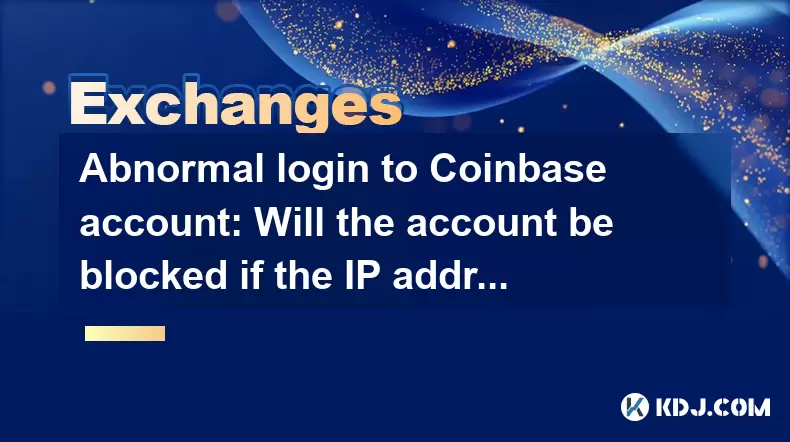-
 Bitcoin
Bitcoin $117500
2.15% -
 Ethereum
Ethereum $3911
6.19% -
 XRP
XRP $3.316
10.79% -
 Tether USDt
Tether USDt $1.000
0.01% -
 BNB
BNB $787.2
2.24% -
 Solana
Solana $175.2
4.15% -
 USDC
USDC $0.9999
0.00% -
 Dogecoin
Dogecoin $0.2225
8.40% -
 TRON
TRON $0.3383
0.28% -
 Cardano
Cardano $0.7868
6.02% -
 Stellar
Stellar $0.4382
9.34% -
 Hyperliquid
Hyperliquid $40.92
7.56% -
 Sui
Sui $3.764
7.63% -
 Chainlink
Chainlink $18.48
10.66% -
 Bitcoin Cash
Bitcoin Cash $582.1
1.88% -
 Hedera
Hedera $0.2601
6.30% -
 Avalanche
Avalanche $23.33
4.94% -
 Ethena USDe
Ethena USDe $1.001
0.02% -
 Litecoin
Litecoin $122.3
2.04% -
 UNUS SED LEO
UNUS SED LEO $8.969
-0.27% -
 Toncoin
Toncoin $3.339
0.86% -
 Shiba Inu
Shiba Inu $0.00001287
4.30% -
 Uniswap
Uniswap $10.43
7.38% -
 Polkadot
Polkadot $3.861
5.08% -
 Dai
Dai $1.000
0.02% -
 Bitget Token
Bitget Token $4.513
3.41% -
 Monero
Monero $267.7
-6.18% -
 Cronos
Cronos $0.1499
4.14% -
 Pepe
Pepe $0.00001110
5.15% -
 Aave
Aave $284.9
8.28%
Abnormal login to Coinbase account: Will the account be blocked if the IP address changes frequently?
Coinbase monitors for abnormal logins, including frequent IP changes, and may send notifications or require verification to protect your account from unauthorized access.
May 18, 2025 at 09:35 pm

When it comes to managing your Coinbase account, one of the common concerns among users is the impact of frequent IP address changes on account security. This article delves into the specifics of how Coinbase handles abnormal logins, the potential risks associated with frequent IP address changes, and what you can do to protect your account.
Understanding Coinbase's Security Measures
Coinbase, like many other cryptocurrency platforms, employs a variety of security measures to protect user accounts. One of these measures includes monitoring for abnormal login activity, which can include logins from different IP addresses. The platform uses this data to detect potential unauthorized access attempts and to safeguard user accounts.
What Constitutes an Abnormal Login?
An abnormal login on Coinbase is typically identified by several factors. These include logins from unfamiliar devices, unusual geographic locations, and notably, frequent changes in IP addresses. When Coinbase detects such activity, it may trigger additional security protocols to verify the user's identity and protect the account.
The Impact of Frequent IP Address Changes
Frequent changes in IP addresses can raise red flags for Coinbase's security system. This is because such activity might indicate that someone else is attempting to access your account. While Coinbase does not automatically block an account due to frequent IP address changes, it may implement additional security measures. These measures can include sending verification codes to your registered phone number or email, or temporarily locking your account until you can confirm your identity.
How Coinbase Responds to Detected Abnormal Activity
When Coinbase detects abnormal login activity, it typically takes the following steps:
- Send a notification to your registered email or phone number. This notification will alert you to the unusual activity and may include instructions on how to secure your account.
- Require additional verification. You may be prompted to enter a two-factor authentication (2FA) code or to answer security questions to confirm your identity.
- Temporarily restrict account access. In some cases, Coinbase may temporarily lock your account to prevent unauthorized access. You will need to contact their support team to regain access.
Steps to Take if You Experience Frequent IP Address Changes
If you frequently change your IP address due to travel or using different networks, there are steps you can take to minimize the risk of your account being flagged:
- Enable two-factor authentication (2FA). This adds an extra layer of security to your account and can help prevent unauthorized access.
- Keep your contact information up to date. Ensure that Coinbase has your current phone number and email address so you can receive notifications and verification codes promptly.
- Use a VPN with caution. If you use a VPN, be aware that frequent changes in VPN servers can also trigger Coinbase's security protocols. Consider using a VPN with a static IP address if possible.
Best Practices for Securing Your Coinbase Account
To further protect your Coinbase account, consider implementing the following best practices:
- Regularly review your account activity. Check your account logs to ensure there are no unauthorized transactions or logins.
- Use strong, unique passwords. Avoid using the same password across multiple platforms, and consider using a password manager to generate and store complex passwords.
- Be cautious of phishing attempts. Always verify the authenticity of emails and messages purporting to be from Coinbase. Never click on suspicious links or provide personal information to unsolicited requests.
What to Do If Your Account Is Temporarily Blocked
If your Coinbase account is temporarily blocked due to frequent IP address changes or other security concerns, follow these steps to regain access:
- Contact Coinbase support. Reach out to their customer support team via their official channels. Provide them with any requested information to verify your identity.
- Follow the provided instructions. Coinbase support will guide you through the process of securing your account and lifting the temporary block.
- Review and update your security settings. Once you regain access, take the time to review and strengthen your account's security settings.
Frequently Asked Questions
Q: Can I use a VPN with my Coinbase account without issues?
A: Using a VPN with Coinbase is possible, but frequent changes in VPN servers can trigger security protocols. If you must use a VPN, consider one with a static IP address to minimize the risk of your account being flagged.
Q: How long does it take to resolve an account block due to abnormal login activity?
A: The time it takes to resolve an account block can vary depending on the specific circumstances and how quickly you can provide the necessary verification to Coinbase support. Typically, it can take anywhere from a few hours to a couple of days.
Q: Will Coinbase notify me if there's suspicious activity on my account?
A: Yes, Coinbase will send notifications to your registered email or phone number if it detects suspicious activity. It's crucial to keep your contact information up to date to receive these alerts promptly.
Q: Can I prevent my account from being flagged due to frequent travel?
A: While you can't completely prevent your account from being flagged, you can minimize the risk by enabling 2FA, keeping your contact information current, and regularly reviewing your account activity.
Disclaimer:info@kdj.com
The information provided is not trading advice. kdj.com does not assume any responsibility for any investments made based on the information provided in this article. Cryptocurrencies are highly volatile and it is highly recommended that you invest with caution after thorough research!
If you believe that the content used on this website infringes your copyright, please contact us immediately (info@kdj.com) and we will delete it promptly.
- SNEK, Cardano, and the Contributor's Conundrum: A Meme Coin's Fight for Recognition
- 2025-08-08 16:30:12
- Toshi Crypto's Wild Ride: Rally, Demand Slump, and What's Next
- 2025-08-08 16:30:12
- Ethereum, Staking Yields, and DeFi Exposure: A New Era for Investors?
- 2025-08-08 15:10:12
- Unilabs Pumps MIA, Binance Coin Bouncing Back, and Ethereum's Bearish Blues
- 2025-08-08 15:10:12
- Ethereum's Wyckoff Markup and Market Rotation: A New Era?
- 2025-08-08 15:30:12
- Ethereum, Vitalik Buterin, and the Overleveraged Game: A Balancing Act
- 2025-08-08 15:30:12
Related knowledge

How to use margin trading on Poloniex
Aug 08,2025 at 09:50am
Understanding Margin Trading on Poloniex

How to use advanced trading on Gemini
Aug 08,2025 at 04:07am
Understanding Advanced Trading on GeminiAdvanced trading on Gemini refers to a suite of tools and order types designed for experienced traders who wan...

How to deposit USD on Bitstamp
Aug 07,2025 at 05:18pm
Understanding Bitstamp and USD DepositsBitstamp is one of the longest-standing cryptocurrency exchanges in the industry, offering users the ability to...

How to use the Kraken Pro interface
Aug 08,2025 at 09:57am
Understanding the Kraken Pro Interface LayoutThe Kraken Pro interface is designed for both novice and experienced traders seeking a streamlined experi...

How to find my transaction ID on Gemini
Aug 08,2025 at 12:50am
Understanding the Transaction ID in Cryptocurrency ExchangesA transaction ID (TXID) is a unique alphanumeric string that identifies a specific transfe...

How to calculate crypto taxes from Binance
Aug 08,2025 at 07:56am
Understanding Cryptocurrency Taxation on BinanceCalculating crypto taxes from Binance requires a clear understanding of how tax authorities classify d...

How to use margin trading on Poloniex
Aug 08,2025 at 09:50am
Understanding Margin Trading on Poloniex

How to use advanced trading on Gemini
Aug 08,2025 at 04:07am
Understanding Advanced Trading on GeminiAdvanced trading on Gemini refers to a suite of tools and order types designed for experienced traders who wan...

How to deposit USD on Bitstamp
Aug 07,2025 at 05:18pm
Understanding Bitstamp and USD DepositsBitstamp is one of the longest-standing cryptocurrency exchanges in the industry, offering users the ability to...

How to use the Kraken Pro interface
Aug 08,2025 at 09:57am
Understanding the Kraken Pro Interface LayoutThe Kraken Pro interface is designed for both novice and experienced traders seeking a streamlined experi...

How to find my transaction ID on Gemini
Aug 08,2025 at 12:50am
Understanding the Transaction ID in Cryptocurrency ExchangesA transaction ID (TXID) is a unique alphanumeric string that identifies a specific transfe...

How to calculate crypto taxes from Binance
Aug 08,2025 at 07:56am
Understanding Cryptocurrency Taxation on BinanceCalculating crypto taxes from Binance requires a clear understanding of how tax authorities classify d...
See all articles

























































































